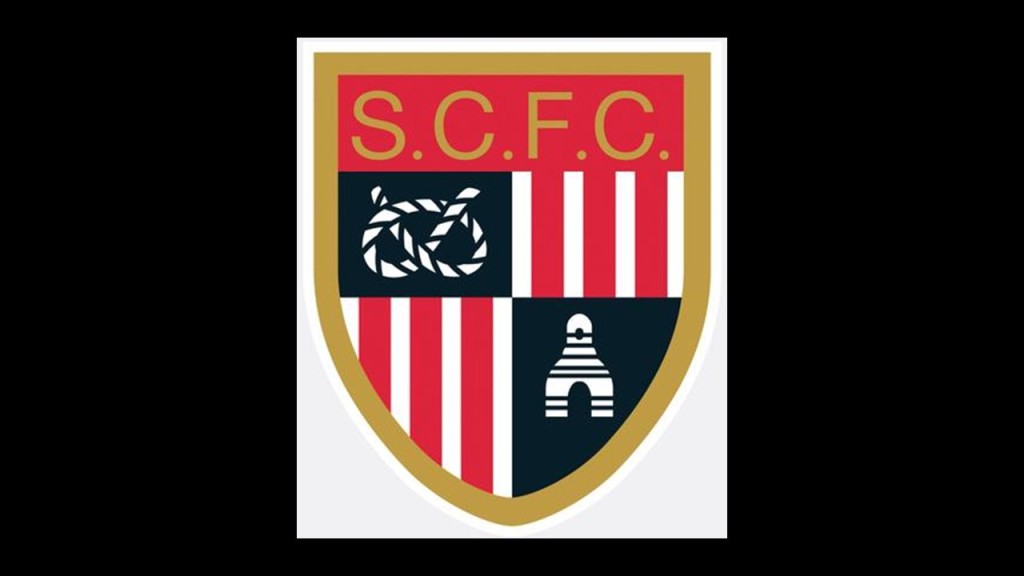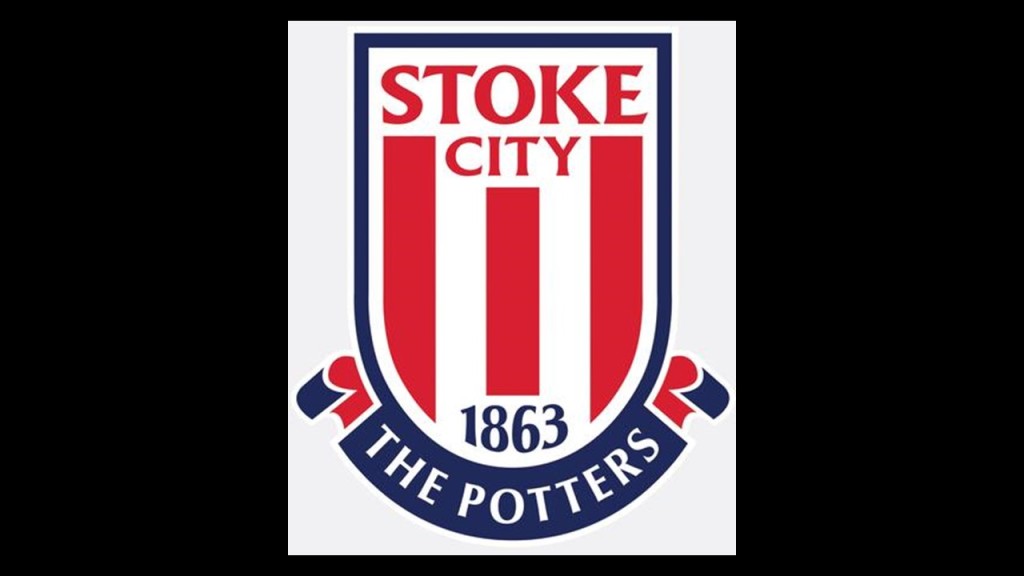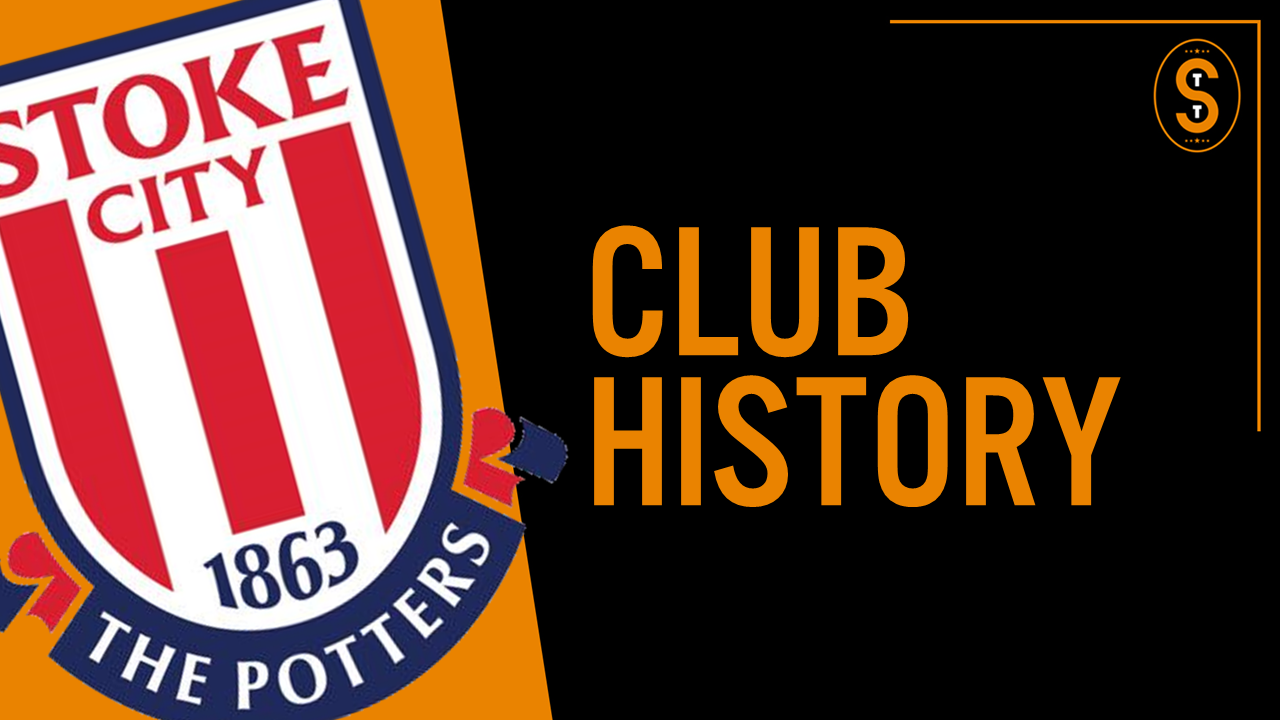Welcome to the Soccer Tavern, where we’re discussing the history, culture, and philosophy of the beautiful game. My name is Dave and in this video, we’re talking about the history of Stoke City Football Club. Pull up a seat and let’s start the discussion.
Stoke City FC is located in the south-central part of the city of Stoke-on-Trent. Stoke-on-Trent is located in the central part of England in the United Kingdom. The club currently play in the Premier League (the video was recorded in March 2018 when the club was still in the Premier League) and its home ground is called the bet365 Stadium, which opened in 1997 and holds about 28,000 people.
Origin
Stoke City Football Club claim to be the second oldest professional soccer club in the world although details about their actual formation date remain a bit cloudy. There is a story that in 1863, students from the Charterhouse School formed a soccer club while they were apprentices at the Railway company in Stoke. There’s very few details and records about this club and/or matches happening from 1863 to 1868, but in September 1868, a magazine called The Field reported that a new Association Football (or soccer) club had been formed in Stoke-on-Trent called the Stoke Ramblers.
The founding member of the club was Henry Almond, a former Charterhouse School student. So it’s possible this club was a continuation of the club allegedly formed in 1863, but it’s not definitive. What is definitive is that the club began playing in 1868.
Ten years later, the club merged with Stoke Victoria Cricket Club and became Stoke Football Club. The club operated under that name until the summer of 1925 when King George V visited the then town of Stoke-on-Trent and granted it city status. This was a huge deal for the city and the club decided to add the city moniker to their name shortly after, thus becoming Stoke City FC that we know today.
Nickname
Stoke City are nicknamed the Potters.
The nickname comes from the city of Stoke-on-Trent’s history with pottery. The areas that became the city of Stoke-on-Trent were the epicenter of pottery production in the UK and the world in the 17 & 1800s. Though the pottery rose to prominence during that time, the pottery industry had existed for centuries before this. Given the area’s deep ties to pottery, it was only natural that the soccer club from the area would have the nickname of the Potters.
Crest
The club used the City of Stoke-on-Trent’s coat of arms up until the 1970s.

At this time, the Potters changed the crest to a shield shape with the initials SCFC at the top (standing for Stoke City Football Club), and 4 quadrants on the shield. 2 quadrants had red & white vertical stripes that mimicked the club’s kit. And the other 2 quadrants had a Stafford knot and pottery kiln. Both of these last 2 symbols were references to the area surrounding Stoke-on-Trent.

The current crest, which has been used since 2001, was developed with modern branding very much in mind. It was said to be inspired by AC Milan and was developed by the same design studio that helped design Liverpool’s new crest.
The club’s name is at the top. The red & white vertical lines are a nod to the club’s historical kit colors.
1863 is a reference to the club’s possible founding date, which we’ve already discussed and the club’s nickname of The Potters is at the bottom.
Important Events
I’d like to discuss 3 important events in the club’s history now:
(1) Stoke FC was one of the founding members of the Football League on April 17th, 1888 at the Royal Hotel in Manchester. This league laid the foundations for what eventually became the English football pyramid and about a century later, the Premier League.
(2) Now, let’s jump ahead about 85 years. On March 4, 1972, the club played Chelsea FC in the final of the League Cup at Wembley. Stoke had won a marathon semifinal series against West Ham that included 4 matches to get to the final. In the final, Stoke jumped out to a lead in the 4th minute through a Terry Conroy header, but Chelsea equalized just before halftime. Stoke scored the winning goal in the 67th minute through George Eastham to win the club’s only major trophy in their existence.
(3) January 3, 1976, there was a massive storm overnight that caused £250K worth of damage to Stoke’s Victoria Ground stadium roof. The cost to repair the stadium, left Stoke in a terrible financial position and the club was forced to sell off some of their best players. Port Vale helped the Potters by lending their home ground, but it wasn’t enough as Stoke were relegated to the Second division for the first time in 14 years. They were able to bounce back to the first division a few years later, but this freak storm killed any of the club’s momentum that had been building with the solid squad they established in the 1970s. It was incredibly unfortunate timing for the club.
Supporters
Back in the 1970s and 80s, Stoke City had one of the most infamous and violent hooligan firms (gangs) called the Naughty Forty or N40. At the height of the organization’s powers, it had 400 members that would fight other hooligan firms at matches home or away.
Noteworthy Players
Sir Stanley Matthews made 355 appearances for Stoke City and scored 62 goals. Sir Stanley holds the record for the oldest ever player to feature in England’s top division. His appearance for Stoke City against Fulham in February 1965 came shortly after his 50th birthday.
Gordon Banks was one of the greatest goalkeepers in history. He won the 1966 World Cup as England’s goalkeeper and is also known for making the ‘save of the century’ on Pele in 1970 in a match for England. He made 246 appearances for Stoke after joining in 1967 and won the 1972 League Cup with the club. Unfortunately, later in 1972, a car accident blinded him in one eye and forced his early retirement from the game.
Peter Shilton followed in Gordon Banks’ footsteps in many ways. He displaced Banks at Leicester City, forcing Banks to join Stoke and also replaced Banks as England GK in 1970. He appeared in a record 1,390 matches for 11 different clubs and is England’s all-time appearance record holder with 125 caps as well as record holder for clean sheets with 65. He joined Stoke in 1974 and made 110 league appearances for the club before moving to Nottingham Forest in 1977.
Michael Owen is certainly not a club legend as he only made 9 appearances, scoring 1 goal for the club. Owen retired from playing at the end of his Stoke contract in 2013. But he is the last English player to win the Ballon D’or (given to the best player in the world), so deserves a mention here as he won the award in 2001.
Noteworthy Managers
Tony Waddington managed Stoke from 1960 to 1977. He managed 822 matches, winning 288 of them and was the manager for Stoke’s only major trophy – the 1972 League Cup. He was able to attract Stanley Matthews back to the club from Blackpool in the early 1960s and is widely regarded by Stoke fans as the greatest manager in the club’s history.
Tony is by far the greatest manager in the club’s history but Tom Mather and Bob McGrory also deserve mention.
Mather led the team from 1923 – 1935. Things started rough for him, but he won the third and second division titles and stabilized the club in the first division. He also gave Stanley Matthews his debut and was instrumental in developing local players and giving them a chance with the first team.
Bob McGrory took over from Mather in 1935 and managed the club until 1952. McGrory actually joined the club as a player in 1921 and stayed for 31 years between playing and managing. He led the club to its highest ever finish of 4th in the first division in the 1935-1936 season and possibly could have won the first division if not for the outbreak of WWII. Famously, his wife took one look at the city of Stoke on Trent upon arrival in 1921 and got right back on a train to Scotland. The couple stayed married but lived separately for the 31 years McGrory was in Stoke, with Bob venturing back to Scotland in the summers to visit his wife.
Rivals
The Potters have 4 rivals I’d like to highlight here. West Bromwich Albion, Wolverhampton Wanderers, Arsenal, & Port Vale.
In addition to being local rivals and playing many times over the years, the West Brom – Stoke rivalry started to really heat up when both clubs were in the old 3rd division in the early 1990s. Both clubs were targeting promotion in the 1992-93 season, but their approaches to winning greatly varied. West Brom tried to play attractive, attacking soccer and Stoke took a more physical, direct approach. The 3 matches that season between the clubs were all won by Stoke, but a rivalry was solidified as both were promoted. Stoke and West Brom have met many times across the years in England’s different divisions and West Brom are Stoke’s biggest rival.
The Wolverhampton Wanderers rivalry comes from Wolves being a nearby rival to Stoke. There’s not much detail behind the rivalry beyond the two clubs are located in the same geographic area and have played many times over the years.
An additional, unlikely rivalry that has popped up in Stoke’s Premier League years is Arsenal FC. The rivalry actually stretches back to the early 1970s when Stoke suffered 2 unjust defeats, at least in the Stoke supporters’ eyes, at the hands of Arsenal. Moving forward to the Premier League era, Stoke played Arsenal in November 2008 and won 2-1 with a stereotypical Stoke performance. Stoke were physical, forcing 3 Arsenal players off injured, and scored their two goals on long throw ins. Arsenal manager Arsene Wenger complained after the match and the two clubs have met many times over the years, with Stoke continuing to be very physical and frustrating Arsene and his players. The most physical of which was in 2010 when Stoke captain Ryan Shawcross broke Aaron Ramsey’s leg in a horror challenge. Stoke’s style has changed a bit in recent years away from the physical but there is still some intensity between the clubs.
And finally Port Vale are Stoke’s nearest local rivals, but the two clubs haven’t met very often in their existence. The rivalry isn’t too great but Port Vale is worth mentioning as it’s a local derby though.
Stats & Records
The stats and records we’re about to discuss are as of March 2018 when we are recording this video
Stoke have spent 62 seasons in the top flight in their history.
The club’s only major trophy is the 1962 League Cup.
The club’s record first team appearance holder is Eric Skeels with 597 appearances.
The club’s record goal scorer is John Ritchie with 176 goals.
The Potters’ record transfer purchase was Giannelli Imbula from Porto in Portugal in February 2017 for about £18M.
And the club’s record transfer sale was Marko Arnautovic to West Ham United in July 2017 for about £20M initially with a potential £5M more in add-ons.
One last interesting fact about the club: Stoke City was instrumental in the addition of both the penalty kick and injury time being added to the rules of soccer. Both incidents happened in 1891.
Regarding the penalty rule, Stoke played Notts County in an FA cup match and a Notts county player blocked a goal bound shot with his hands. It resulted in a free kick and Notts County lined up all 11 players on the goaline and blocked the shot. The referee from that match didn’t think it was fair, so when he became a legislator, he campaigned to introduce the penalty kick inspired by this moment.
Later in 1891, Stoke were trailing by a goal late in a match against Aston Villa. Stoke earned a penalty, but an Aston Villa player picked up the ball and booted it out of the stadium. The referee blew for full time before the ball could be retrieved and the rules for added time were implemented shortly after.
So there you have it… a bit of history on Stoke City Football Club. Let’s continue the discussion in the comments section below this video.
Thanks for stopping by the Soccer Tavern. Hope to see you again sometime soon. Cheers.
